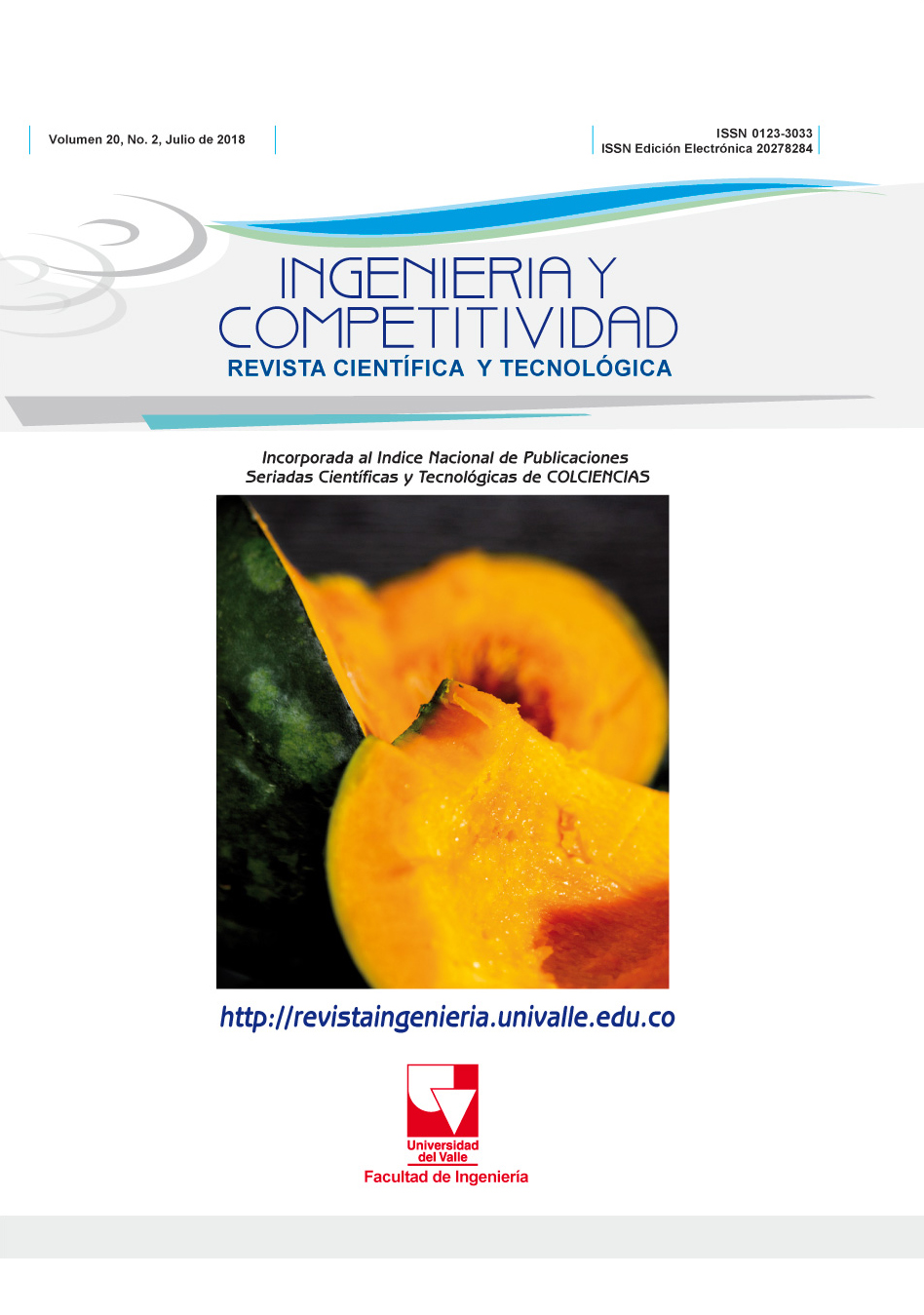Effect of hydrodrying conditions on shrinkage of pumpkin (Cucurbita maxima) pieces
Main Article Content
addition to being economically viable. For this reason, several technologies, including pre-treatments and
improvements to the drying technique itself, have been applied and developed. Using the methodology called “conductive hydro-drying” based on the Refractance Window (RWTM) technique, rectangular pieces of pumpkin (1.2 x 1.1 x 5.9 cm3) were dehydrated using a thermostatic bath with water at 90±2 °C, for 3 hours. Hence, a 22 factorial design were performed to analyse the effect of convection and conduction on the shrinkage of samples. The tested factors were the type of convection with two levels: natural convection (NC) and forced convection (FC); and the type of drying foil with two levels: MylarTM (MY) and MylarTMwith aluminium foil (MY/AL). The volume change factor (V/V0) from primary dimensions (width, height and length) of the samples was evaluated during drying. The smaller and the larger shrinkage, according to the volume change factor, were observed in natural convection treatments NC-MY/AL and NC-MY, respectively. An exponential relationship between drying rate and volume change factor was found. The ANOVA indicated that convection and convection-film interaction were statistically significan
Similar Articles
- Claudia I. Duarte Barrera, Jorge E. Mariño-Martínez, Beyond Desorption Testing on Coal Bed Methane Exploration (CBM). Colombia Case , Ingeniería y Competitividad: Vol. 24 No. 02 (2022): Ingeniería y Competitividad
- Jenifer Criollo Nuñez, Jorge D. Fonseca-Blanco, Martha DP. Lopez-Hernandez, Angelica P. Sandoval-Aldana, Dagoberto Criollo-Cruz, un comparative study of two pectinolytic enzymes in the liquefaction of copoazú pulp (Theobroma grandiflorum) and extraction of dietary fiber , Ingeniería y Competitividad: Vol. 24 No. 02 (2022): Ingeniería y Competitividad
- Cindy L. Argote-Sánchez, Juliana M. Lozano-Santa, Aldemar Reyes-Trujillo, Determination of the water regulation capacity of a typic hapludands by means of humidity retention curves and the modeling of its hydrophysical properties , Ingeniería y Competitividad: Vol. 21 No. 1 (2019): Engineering and Competitiveness
- Jaime Ernesto Díaz Ortiz, Propuesta metodológica para determinar el potencial de humedad de un material granular a partir de la humedad relativa , Ingeniería y Competitividad: Vol. 7 No. 1 (2005)
- Alba Dolly Atehortúa, Carlos Alberto Molina, Alberto Díaz Ortíz, Procesos de deshidratación impregnación por inmersión y fritura aplicados a la elaboración de tajadas de plátano (Musa Paradisiaca Aab) , Ingeniería y Competitividad: Vol. 7 No. 1 (2005)
- Fabián A. Ortega, Everaldo J. Montes, Kinetic parameters of mass transfer in deep-fat frying of cassava slices (Manihot esculenta Crantz) , Ingeniería y Competitividad: Vol. 16 No. 2 (2014)
- Ibeth Rodríguez González, Ruth Mary Benavides-Guevara, Brenda K Jurado, Melissa Marulanda, Carlos M Zuluaga-Domínguez, Physicochemical, textural and sensory properties in cookies made with wheat, oats and quinoa , Ingeniería y Competitividad: Vol. 25 No. 2 (2023): Ingeniería y Competitividad
- Javier Martinez, Ana Calero, Alfredo Ayala Aponte, Amparo Chiralt, Pedro Fito, Efecto del Escaldado sobre la Deshidratación Osmótica del Mango , Ingeniería y Competitividad: Vol. 4 No. 2 (2003)
- María F Jaramillo, Diana A Cardona Zea, Alberto Galvis, Municipal wastewater reuse as a strategy for the prevention and water pollution control: Bolo and Frayle river basins (Colombia) , Ingeniería y Competitividad: Vol. 22 No. 2 (2020): Engineering and Competitiveness
- Natalia Castrillón, Benhur Pabón, Simón Reif-Acherman, Influence of drying conditions on the caning and compactation of stored sugar , Ingeniería y Competitividad: Vol. 13 No. 1 (2011)
You may also start an advanced similarity search for this article.
Authors who publish with this journal agree to the following terms:
Authors retain copyright and ensure the journal the right to be the first publication of the work as licensed under a Creative Commons Attribution License that allows others to share the work with an acknowledgment of authorship of the work and the initial publication in this journal. Starting with volumen 22 issue 1 (2020), the journal adopts the CC BY-NC-SA 4.0 licence.
Authors can establish separate additional agreements for non-exclusive distribution of the version of the work published in the journal (eg, to an institutional repository or publish it in a book), with an acknowledgment of its initial publication in this journal.
Is allowed and authors are encouraged to disseminate their work electronically (eg, in institutional repositories or on their own website)





